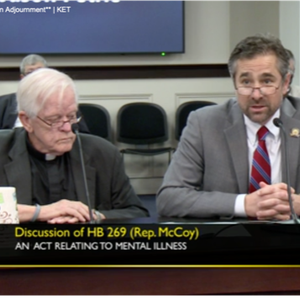

Justice Anthony Kennedy’s votes swung both to the right and to the left on death-penalty issues, professors Carol Steiker (pictured, l.) of Harvard Law School and her brother, Jordan Steiker (pictured, r.) of the University of Texas School of Law write in a commentary for SCOTUSblog, “but [he] declined to swing for the fences.” The Steikers, who co-authored the acclaimed book, Courting Death: The Supreme Court and Capital Punishment, recount Justice Kennedy’s nuanced interpretation of the Eighth Amendment and his mixed legacy as a swing vote on capital punishment. Though he was “a frequent supporter of restrictions on the availability of federal habeas review of capital cases, a skeptic of claims challenging the constitutionality of lethal injection and a relatively reliable vote against granting stays of execution in end-stage capital litigation,” they write, he also was “the author of numerous opinions that broke new ground in the court’s Eighth Amendment jurisprudence.” Most notably, he joined or authored landmark decisions that narrowed the scope of the death penalty, exempting defendants with intellectual disability, juvenile offenders, and those who committed non-homicide crimes. Those decisions on the Court’s “proportionality doctrine” had systemic impact on the administration of the death penalty nationwide and paved the way for later decisions banning the use of mandatory life-without-parole sentences for juveniles. However, Justice Kennedy was content to grapple with the constitutionality of individual death-penalty practices one at a time, rather than addressing the constitutionality of capital punishment as a whole. Kennedy’s role as a swing vote is illustrated by his change of heart on guarantees of individualized sentencing. In his early days on the Court, he voted to restrict defendants’ rights to the consideration of mitigating evidence that could spare their lives, but nearly 20 years later, as the Court as a whole moved ideologically to the right, he shifted leftwards and joined majority opinions that broadly protected the rights to present and have capital sentencers meaningfully consider that evidence. In 1989, he provided the fifth vote in Stanford v. Kentucky to permit the use of the death penalty against offenders aged sixteen and seventeen. By 2005, citing an evolution of values in the United States, he authored the Court’s 5-4 decision in Roper v. Simmons banning the death penalty for offenders under age eighteen. In 2015, Kennedy started an important discussion of the conditions of incarceration on death row, raising questions about the effects of long-term solitary confinement. Justice Stephen Breyer drew on Kennedy’s concerns in his dissent in Glossip v. Gross, questioning the constitutionality of capital punishment.
(Carol Steiker and Jordan Steiker, Justice Kennedy: He swung left on the death penalty but declined to swing for the fences, SCOTUSBlog, July 2, 2018.) See U.S. Supreme Court and History of the Death Penalty.
United States Supreme Court
Mar 22, 2024

Women’s History Month Profile Series: Carol Steiker, Harvard Law School Professor
United States Supreme Court
Dec 05, 2023

Justice Sandra Day O’Connor’s Conflicted Death Penalty Jurisprudence
United States Supreme Court
Nov 02, 2023


